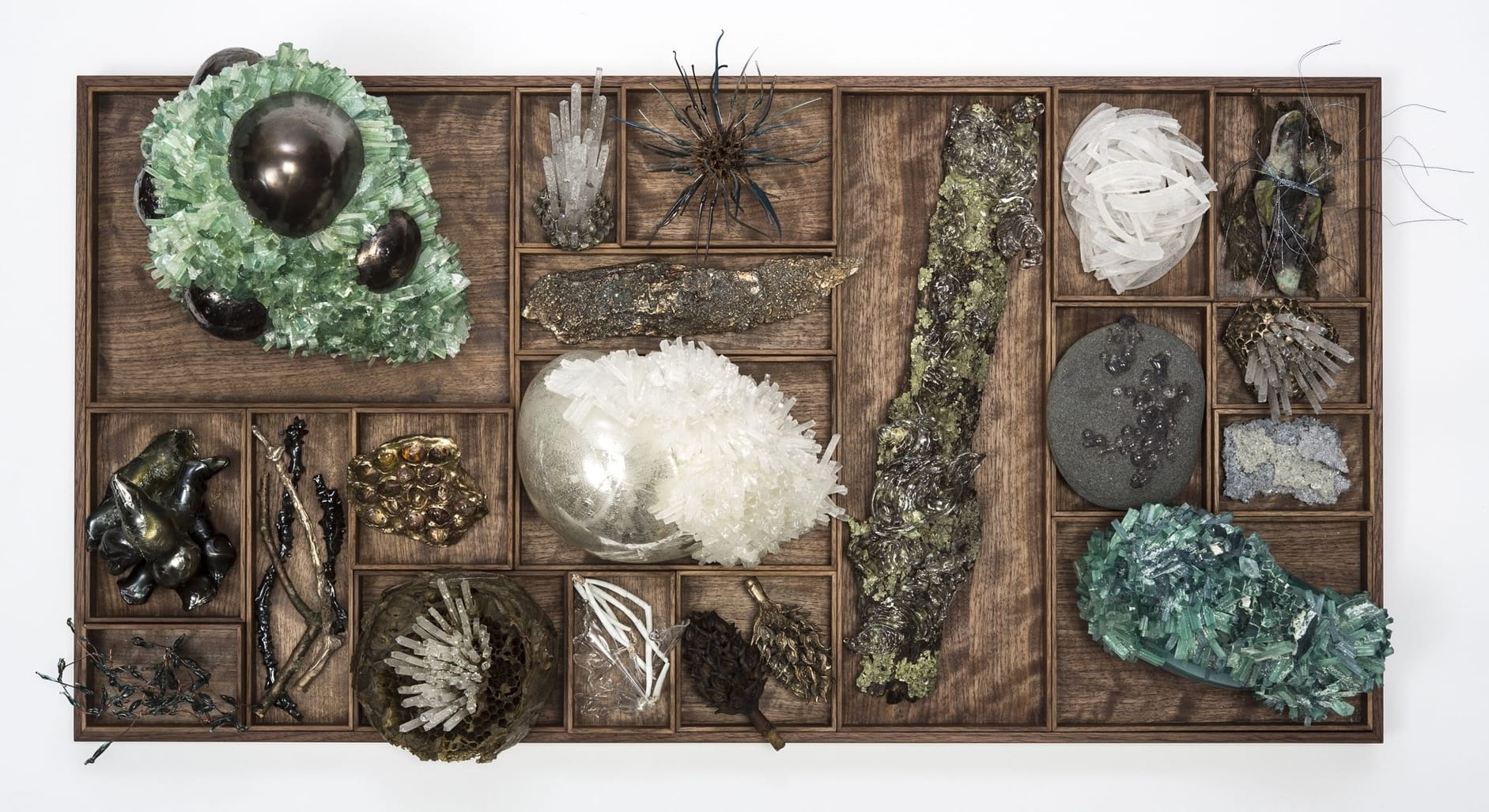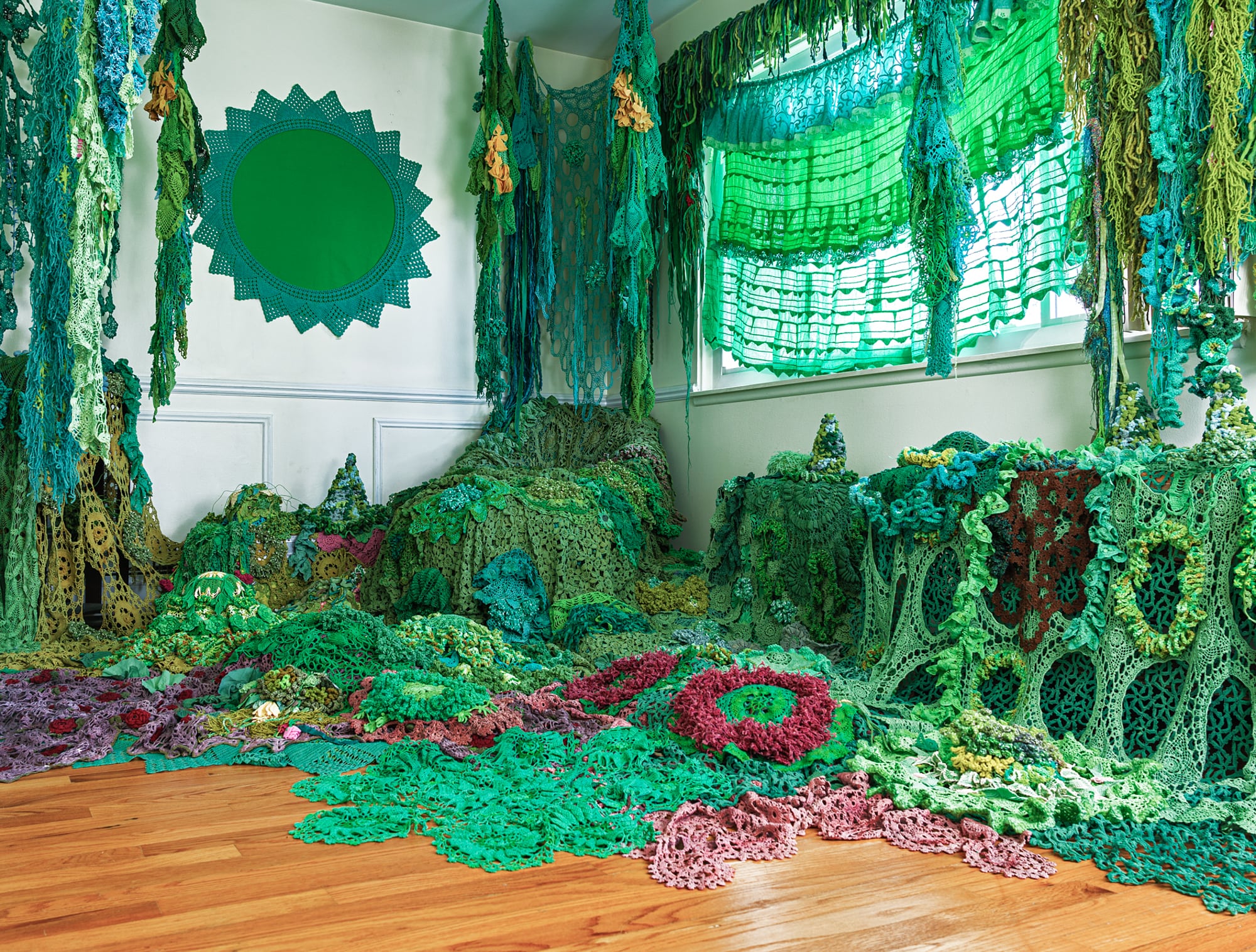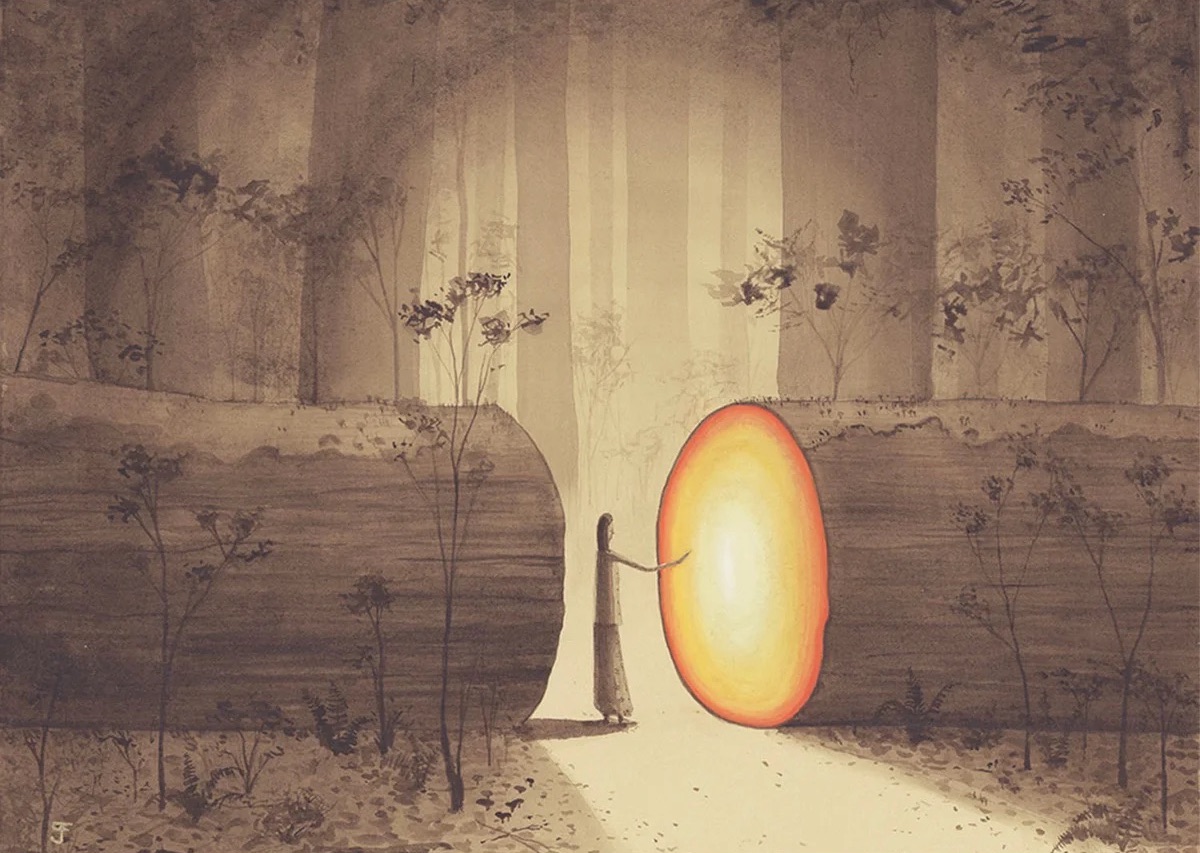
From ceramics and wool fiber, Nicole McLaughlin (previously) summons striking connections between materials, heritage, and personal experiences. She draws upon the rich traditions of historically domestic crafts to reconsider their roles today, merging ceramics and textiles into elegant, cascading wall sculptures.
Drawing on artisanal trades like pottery and weaving, McLaughlin deconstructs preconceptions about form and function, emphasizing mediums, techniques, and themes through the unexpected pairing of stoneware and fiber. Her works encourage us to think critically about relationships between tenderness and strength or past and present.

Many of the pieces shown here are from McLaughlin’s ongoing Indigo Series, which explores the history of the Mayan pigment and its taps into the continuity of life cycles, history, and culture. Streams of wool fiber flow from central openings in glazed ceramic spheres, referencing the life-giving flow of water as a parallel to fertility and maternal care.
McLaughlin gave birth to a daughter in early 2024, which dramatically shifted how she viewed her studio practice. The work in her most recent exhibition, String of Life at Anderson Yezerski Gallery, merges personal experiences and her Mexican cultural heritage, delving into themes of life and the transformative journey of motherhood.
“The transformation of organic material echoes the transformative nature of motherhood,” McLaughlin said in a statement for the show. “The range of colors captures an intense emotional spectrum—from the vitality of birth to the softer, more intimate moments.”
For McLaughlin, cochineal carries an equivalent significance. The brilliant magenta hue emerges from carmine dye, also known as cochineal, which comes from crushing an insect of the same name. The color plays a vital role in Indigenous material culture and heritage of the Americas.

For the Aztecs and Mayans, red was symbolic of the gods, the sun, and blood, and the dye was traded throughout Central and South America for use in rituals, producing pigments for manuscripts and murals, and for dyeing cloth and feathers.
“During the Mayan empire, indigo was combined with clay and incense to create a pigment known as Maya blue,” she says. “The pigment was said to hold the healing power of water in the agricultural community.”
McLaughlin’s work is in the group exhibition OBJECTS: USA 2024 at R & Company in New York, which continues through tomorrow. The artist is currently taking a short break from the studio in anticipation of working toward a solo exhibition at Adamah Ceramics in Columbus, Ohio, which will open this fall. See more on her website, and follow updates on Instagram.









Do stories and artists like this matter to you? Become a Colossal Member today and support independent arts publishing for as little as $7 per month. The article Nicole McLaughlin’s Mixed-Media Sculptures Celebrate Craft, Heritage, and New Life appeared first on Colossal.



